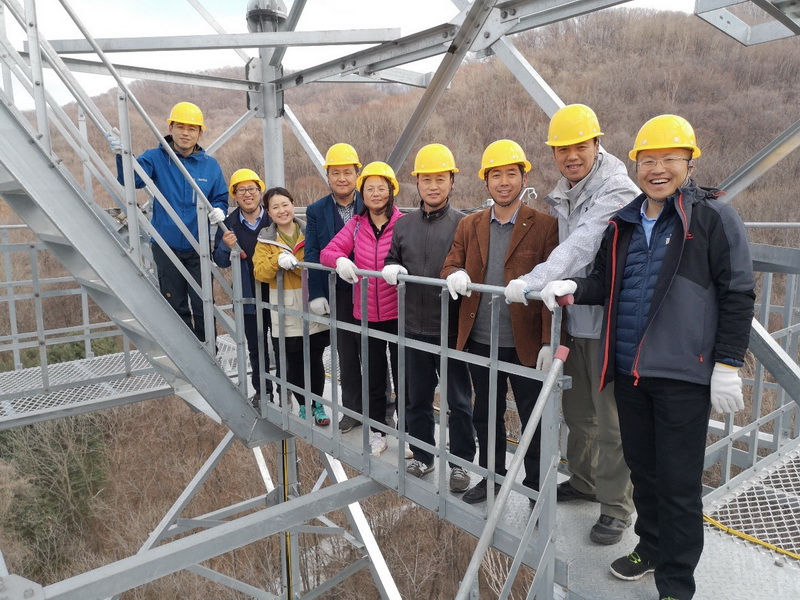Delegation from the Institute of Botany Visits Qingyuan Station
On April 10, a delegation of six people from the Institute of Botany of the Chinese Academy of Sciences, including JING Xinming (deputy director), LI Zheyong (deputy chief of the Administration Division), ZHAO Changzheng (deputy chief of the Science and Technology Division), XIE Zongqiang (chief of the National Field Station for Hubei Shennongjia Forest Ecosystem Research; referred to as Shennongjia Station), ZHAO Changming (senior engineer) and XU Wenting (senior engineer) come to the Institute of Applied Ecology (IAE) of the Chinese Academy of Sciences and visited the CAS Qingyuan Forest Ecosystem Research Station (Qingyuan Station) to exchange experience with scientists of IAE on the LiDAR monitoring tower network platform. ZHU Jiaojun, director of IAE, and chiefs of different divisions of IAE held an informal discussion meeting at IAE with the delegation members of the Institute of Botany.
ZHU Jiaojun introduced the basic situation of IAE and Qingyuan Station, as well as the overall design, research contents and progress of the LiDAR monitoring platform at Qingyuan station. XIE Zongqiang then outlined the overall design, the equipped instruments and the research objectives of 'the Shennongjia Forest Altitudinal Belt Research Platform' which was under construction at Shennongjia Station. The two sides held a heated discussion on the design, infrastructure construction and research directions of the Shennongjia research platform. Subsequently, the delegation of 6 people, accompanied by Dr. YU Lizhong (the deputy chief of Qingyuan Station) and Dr. Gao Tian, visited Qingyuan Station, including the tower network, the heated/warming platform, the meteorological observation site and other experimental sites. YU Lizhong introduced in detail the design of the monitoring tower network, the location selection of the towers, the construction material bidding and purchase procedures, the electric power supply system, the wireless data transmission system, and the related transaction procedures. Dr. GAO Tian detailed the laser radar system, the CO2/water flux/profile systems installed on the towers, and discussed the on-going researches with the members of the delegation. The delegation members highly appraised the work on the LiDAR monitoring platform at Qingyuan station. They hoped that both sides can fully exchange experience and carry out multi-faceted cooperation in the future, such as on the cross-regional comparative research in forest ecology, plant physiology and flux monitoring.
The ‘LiDAR monitoring tower network platform’ located at Qingyuan secondary forest ecosystem research station was financially supported by “the Key project of the Chinese Academy of Sciences for scientific and technological infrastructure construction at CAS field research stations (project implementation period: January 2016 - December 2018). The construction of these towers was finished in April 2018. All the equipments was installed and then used to collect monitoring data since September 2018. Based on this network platform, IAE and Campbell Scientific Inc. co-established Ker Joint Laboratory for Forest Trace Gas and Isotope Flux Monitoring and Research (referred to as Ker Lab). Researchers of Ker Lab have published one SCI paper and obtained one funding project from the National Natural Science Foundation of China. At present, 6 researchers and 4 graduate students conduct researches relying on this platform, and they welcome the well-known scientists at home and abroad to conduct cooperative studies.

| Download the attachment: |



